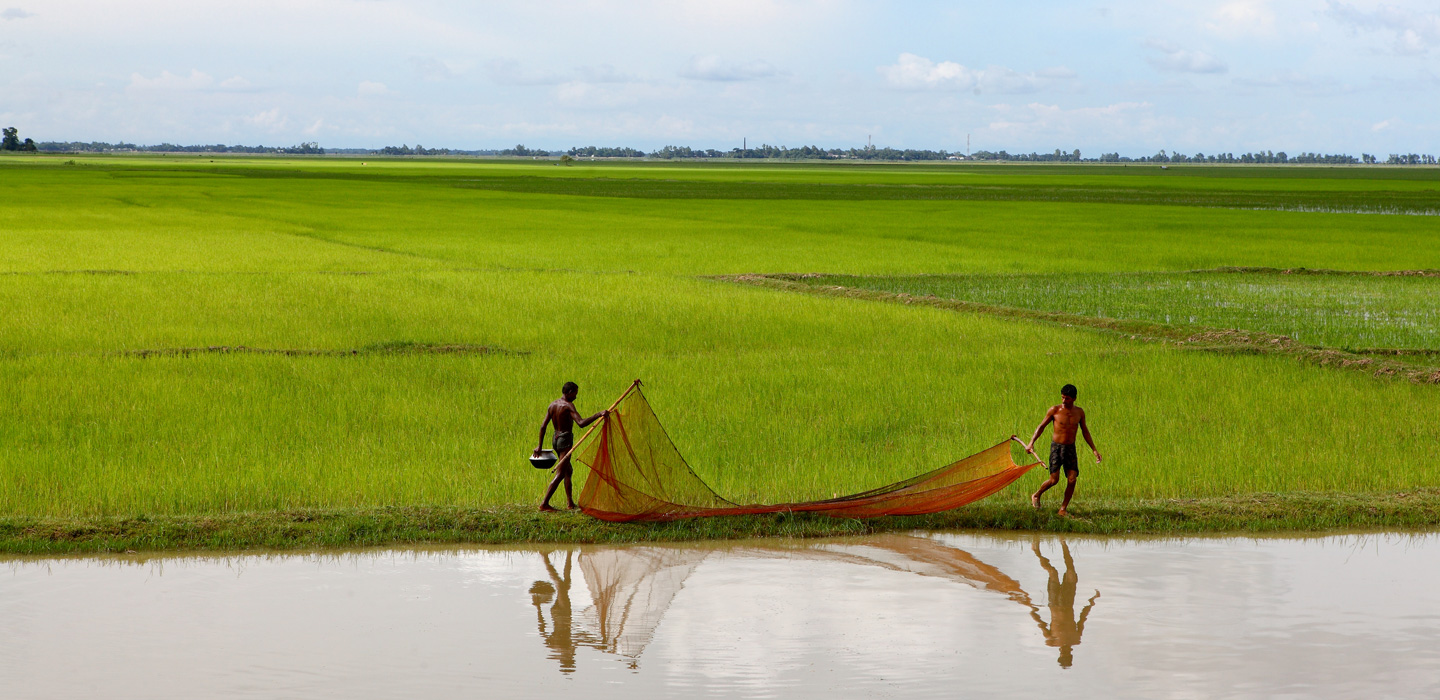As Earth Day adopts a climate action theme, let’s not forget about smallholder farmers
IFAD Asset Request Portlet
Asset Publisher
As Earth Day adopts a climate action theme, let’s not forget about smallholder farmers
Estimated reading time: 4 minutes
©IFAD/GMB Akash
On this day 50 years ago, a whopping 20 million Americans (10 per cent of the population at the time) took to the streets to protest against the beleaguered state of the environment. People turned out in droves in auditoriums, parks and streets to demonstrate against oil spills, emission-spewing factories and power plants, raw sewage, toxic dumps, the loss of wilderness, the overuse of pesticides and the proliferation of freeways across the nation. The first Earth Day had just taken place – and a global movement was born.
Earth Day grew exponentially, mobilizing over 200 million people 20 years on from the first demonstration. Yet while some progress was made stateside in the form of legislation on endangered species and air and water quality, one problem continues to show no sign of slowing down: climate change. The World Meteorological Organization has confirmed that 2019 was the second hottest year on record, capping both the warmest five-year (2015–2019) and ten-year (2010–2019) periods since records began in 1850. The mean global temperature is increasing at an alarming rate. 2019 was 1.1° C warmer than the average for 1850–1900, a measurement used to represent the pre-industrial era. These rising temperatures correspond to a sustained increase in atmospheric carbon dioxide (CO2) concentrations, reaching 407.4 parts per million in 2018 – a level that was last seen 3 million years ago, when the planet looked very different indeed.
As the situation continues to spiral, an onslaught of climate-related impacts and disasters has already begun in every corner of the world. Since the first Earth Day, extensive glacier retreat and shrinking of ice sheets has taken place. 2019 brought devastating flooding to South America, South-West Asia and the central United States. Scores of countries endured scorching heatwaves, including in Central and Northern Europe and Australia, where many cities experienced temperatures in excess of 46° C and a national average summer temperature of almost 41° C, with spring temperatures 2.4° C above average, too. Australia and parts of Central America endured widespread drought. Wildfires tore through several high-latitude areas, including in Alaska, Siberia and parts of the Arctic, where such activity is extremely rare. Australia was ravaged by rampant bushfires that decimated 1.65 million hectares in New South Wales alone. In Mozambique, cyclone Idai resulted in the deaths of more than 600 people, affected over 1.8 million people in total, and caused an estimated US$773 million in damages.
Given the extent of the destruction already caused by climate change, it is appropriate that the theme of this year’s Earth Day is climate action. Yet amidst these headline-making catastrophes and the associated efforts to halt the effects of climate change, one group is often forgotten – smallholder farmers. This is despite the fact that around two thirds of the developing world’s rural population lives on 475 million small holdings of 2 hectares or less. These farmers collectively account for 28 to 31 per cent of total crop production and 30 to 34 per cent of the total food supply.
Although these farmers are clearly crucial in the fight to attain food security and achieve many of the SDGs, not enough is being done to shore up their ability to produce food in the face of a changing climate. From 2017 to 2018, an average of US$8 billion per annum was spent on adaptation in the agriculture, forestry, land-use, and natural resource management sectors. To put this in perspective, US$336 billion was spent on renewable energy generation per annum over the same period.
This shortfall in funding exists despite the magnitude of the threat that climate change poses to smallholder agriculture. Studies indicate that climate change has already begun to undermine crop yields. The impact will only become more pronounced in the future – for example, global wheat production alone is expected to tumble by 6 per cent with each degree of additional warming. Dryland settlements in developing countries are particularly vulnerable. Drylands comprise 40 per cent of the Earth’s land area and are home to 2.5 billion people, many of whom have limited capacities to cope with the adverse effects of climate change. Livestock will also be affected. A temperature rise of 2° C is expected to result in a 10 per cent reduction in global rangeland productivity, corresponding to economic losses of between US$9.7 billion and US$12.6 billion, with pastoralists in exposed regions like West Africa likely to bear the brunt of this devastation.
Since its establishment in 1978, IFAD has targeted precisely this group. Recently, as part of its twelfth replenishment, IFAD has pledged to allocate at least 25 per cent of its entire portfolio of loans and grants to climate-focused activities. IFAD also manages the Adaptation for Smallholder Agriculture Programme, the world’s largest fund dedicated to building the adaptive capacity of vulnerable smallholders. ASAP has achieved notable success to date, reaching over 3.1 million smallholders and making $21 million worth of infrastructure climate-resilient. On Earth Day, as with every day, IFAD’s vision and strategic framework remain closely aligned with building resilience, promoting environmental sustainability and empowering smallholders to take affirmative climate action.
Publication date: 22 April 2020